
Do you always take proper care and attention? If not, you should.
"We have one life", so it makes sense to protect it, especially when you are working in a hazardous profession like welding.
Benjamin Franklin, a Founding Father of the United States of America famously said:
“An ounce of prevention is better than a pound of cure.”
He was correct and while the context was not industrial safety.
The message is clear and one which we should all take note of.
If you do not wear proper safety, the least that could happen is you get a small and painful burn.
However, in this industry you know what the consequences are for ignoring your personal safety.
Don’t let it happen to you.
You must ensure every part of your body is protected from flying sparks and other hazards.
As one tiny hot spark landing in your eye will blind you for life.
Horrible right!
Electric arc welding creates temperatures of around 5,500 Celsius where metal liquefies, froths and splutters sending out a spatter of burning droplets.
Each one is around 1,300 Celsius, so you understand why PPE is critical for your safety.
In this article, we’ll look at the Personal Protective Equipment (PPE) you must use to protect your body when welding.
Note: You don't need to have everything in this checklist, it varies task to task. Also, you can use some of them alternatively.
Personal Safety Equipment For Welding (PPE): Complete List
Head Protection:
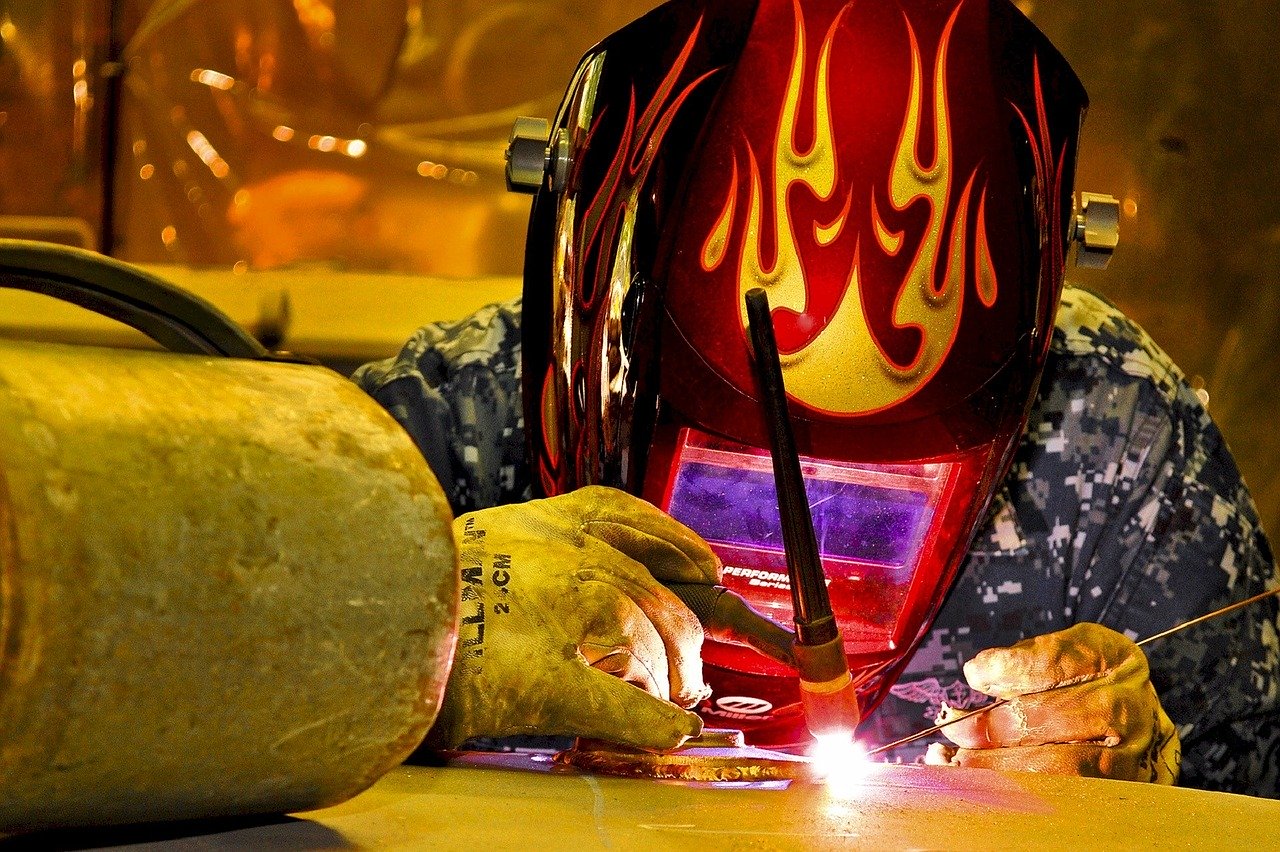



Welding Helmet:
A welding helmet is essential for full-face protection.
A welding helmet will protect your eyes, face and neck from, sparks, heat, flash burns, UV and IR radiation.
Welding helmets have a filter called a lens shade which shields the welder’s eyes from intense radiation.
These filters are made from tinted glass, coated plastic or polarized lenses to create variable density.
Modern helmets use an LCD shutter, which dims automatically when it detects the high intensity of the arc and protects the user.
It allows faster working as the welder doesn’t have to reposition his helmet frequently.
It’s also safer as there’s no risk he may not do it fast enough to block the intensity of the arc.
Overhead welding creates additional dangers which the helmet won’t fully protect you from.
If you are working overhead, it’s essential to wear a hard hat over a protective head cap made from fire-retardant material. Your shoulders also need full protection to prevent serious burns.
Another good choice is a fire-retardant beanie which is thin enough to wear under a hard hat when there is a risk of falling debris.
However, helmets can be damaged, which will reduce the level of protection they can offer from sparks and harmful radiation.
Check your equipment regularly for damage and replace it if necessary.
Eye Protection Against Radiant Energy During Welding and Cutting:
The most frequent injuries are to the eyes.
Painful inflammation of the cornea is caused by unprotected exposure to the intense radiation of the welding arc, is called ‘arc eye.’
It is essential to use safety glasses or goggles with the correct filter rating to ensure your protection.
This lens rating varies from task to task.
The rating describes the amount of energy that can pass through the lens before reaching your eyes.
The greater the filter rating, the denser the filter will be, and the less energy will get through.
The filter relevant rating specifications can be accessed here.
If you use eye protection under a helmet, the helmet filter rating can be lowered accordingly.
Welding Safety Glasses:
One of the most important pieces of PPE is protection for your eyes.
There are so many choices.
It’s hard to select the correct ones for you.
With one pair of eyes, it is one of the most important things to consider.
Five Essentials for Welding Safety Glasses:
- They should offer front and side protection.
- They should be comfortable and fit well.
- They should give the wearer an unrestricted view.
- They should be sturdy and easy to clean without smudges.
- They must be scratch resistant.
Lens Materials:
1. Polycarbonate: Polycarbonate safety glasses is lightweight and will offer protection against UV rays, but are less clear.
2. NXT Polyurethane (Trivex): Very lightweight and they offer excellent visibility, however they are expensive.
3. Acrylic: Acrylic is lighter than glass and offers scratch resistance plus they are cheaper. However, they are less durable and don’t deliver clear vision.
4. Optical Glass: Glass is distortion free and can be coated against scratches. They can also match your prescription. They are heavier to wear and easily broken.
Welding Goggles:
Welding goggles offer a level of safety during some welding or cutting procedures.
Goggles can safeguard your eyes from the intense UV and IR radiation and the heat generated by the process.
They also offer some protection from sparks and debris. Goggles have interchangeable filters which depend on the type of work being done.
Types of Safety Goggles:
Direct vent:
These goggles have ventilation slots which allow fresh air inside to stop the lenses misting up during use.
Indirect Vent:
These goggles also have ventilation slots which allow fresh air inside. The openings are shielded so they fog up fairly quickly.
Non-Vented:
These have no ventilation at all and are made in one solid piece.
They do offer excellent safety against spatter and from physical damage but fog up quickly.
Weld Mask:
A recent development in face PPE are weld masks which are smaller and lighter than a helmet.
You can easily wear a hard hat, especially where you are at risk from falling debris.
They are useful in tight spaces, and you can wear a semi-mask aspirator under the mask.
Check here for more information on Weld Masks.
They are rated for applications with limited spatter.
So, use a full helmet where heavy splatter is anticipated.
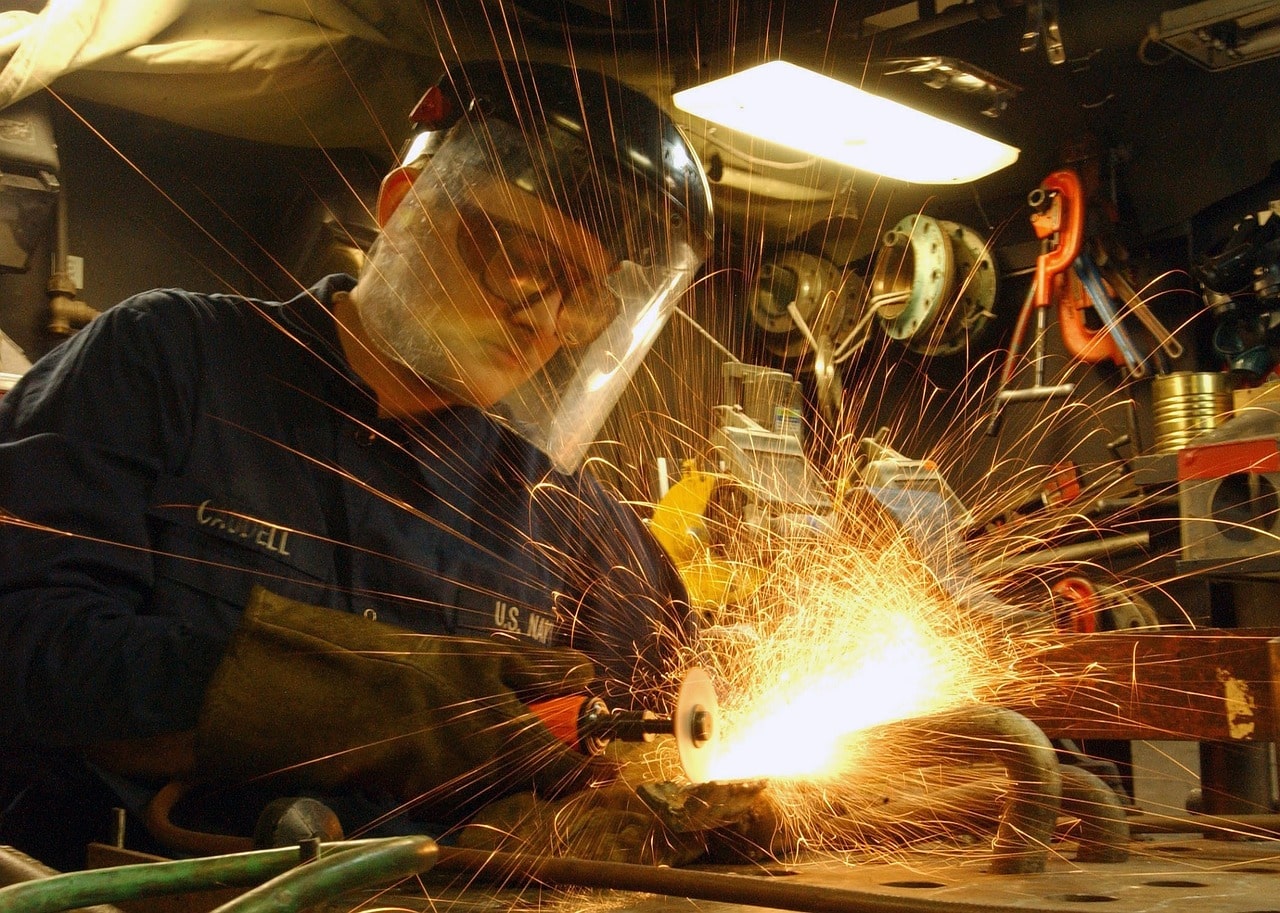



Face Shield:
Face shields are designed to protect against materials coming in contact with your skin, mouth eyes or nose.
These are usually made from shaped polycarbonate, often with UV and IR protection built-in, or in the form of a flippable shield.
Welding masks are available with an in-built face shield to save time when working.
These shields are normally more suitable for grinding, cutting or other tasks where face protection is required.
Hearing Protection
You may think you don’t need ear protection, but you could be wrong.
- Exposure to high levels of noise will permanently damage your hearing. You would be surprised how low the threshold is.
- Tiny specks of hot material getting into your ear can do terrible damage and are hard to dislodge quickly.
Whole-ear protection is best as it covers your whole ear.
Ensure your ear protectors are fire-rated. Do not use synthetic materials as they burn rapidly.
Earplugs are an option, however, they only offer limited protection.
Remember what Benjamin Franklin said.
Controlling Hazardous Fume & Gases During Welding:
Respirator:
Welding generates smoke containing dangerous metal fume, which is a solid, not a gas.
It’s dangerous to your health if you breathe it in.
Prolonged exposure will cause inflammation in the eyes, nose and throat as well as nausea and lightheadedness.
If these symptoms occur, you must leave the area immediately and get fresh air, then seek medical advice.
Carbon monoxide gas can also develop, which creates the risk of suffocation.
Respiratory safety support is needed if the ambient ventilation does not reduce hazards to safe working levels.
No worries, half-mask respirators fit comfortably under welding helmets.
They are low profile and lightweight. Use the correct filters for your type of work.
If fresh air or ventilation is restricted, always use the full respirator.
All in all...
Respirators protect you from inhaling contaminants and preserve your respiratory health.
The most common type of respirator filters chemicals, gases and other airborne elements from the air.
The US National Institute for Occupational Safety and Health (NIOSH) provides recommendations on respirator use.
Clothing Protection...
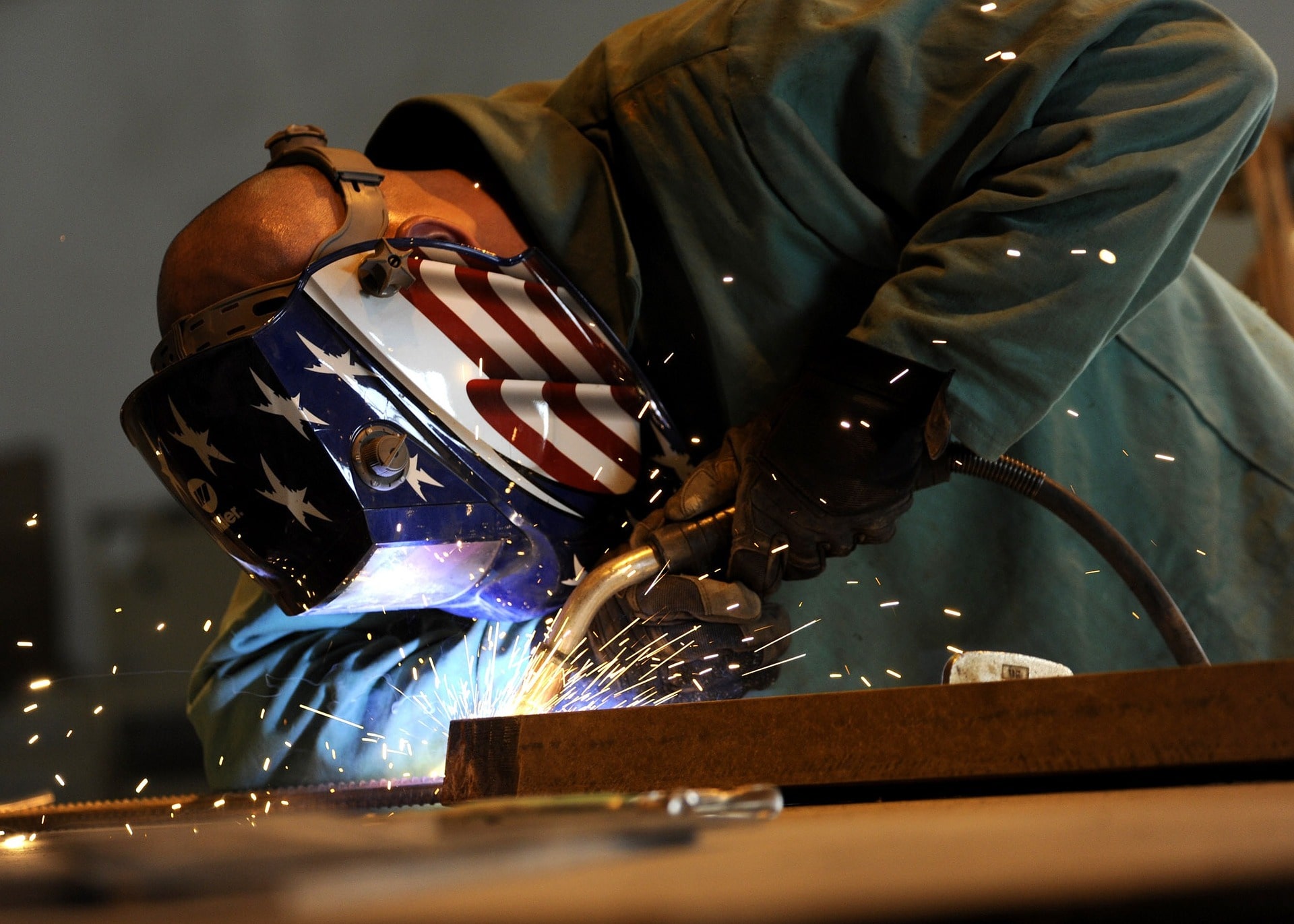



Welding Jacket:
Welding jackets come in a range of materials and styles.
Balancing comfort, safety and cost is difficult.
As many cheaper options are manufactured from cotton, and are fire rated.
However, some of the cheaper jackets lose their fire protection rating after frequent washing.
Flame-resistant cotton works, but better still is a cotton/leather mix.
However, it’s not as good as 100% leather for safety.
Some cotton-based jackets are not suitable for overhead welding, with a high level of spatter.
So, it’s important to check before you buy.
Leather welding jackets offer the best quality and safety ratings overall, with the bonus of a long working life.
They are made in a range of styles to suit most people.
Ensure the sleeve length is correct to avoid vulnerable areas around the wrists.
The jacket should allow you to move freely while working, it should fit well and be comfortable to work in.
Leather jacket are usually lined which makes them more comfortable to wear but are heavier and hotter to work in.
Higher quality always equals higher cost, however, a high-quality leather jacket with Kevlar stitching will outlast other jackets.
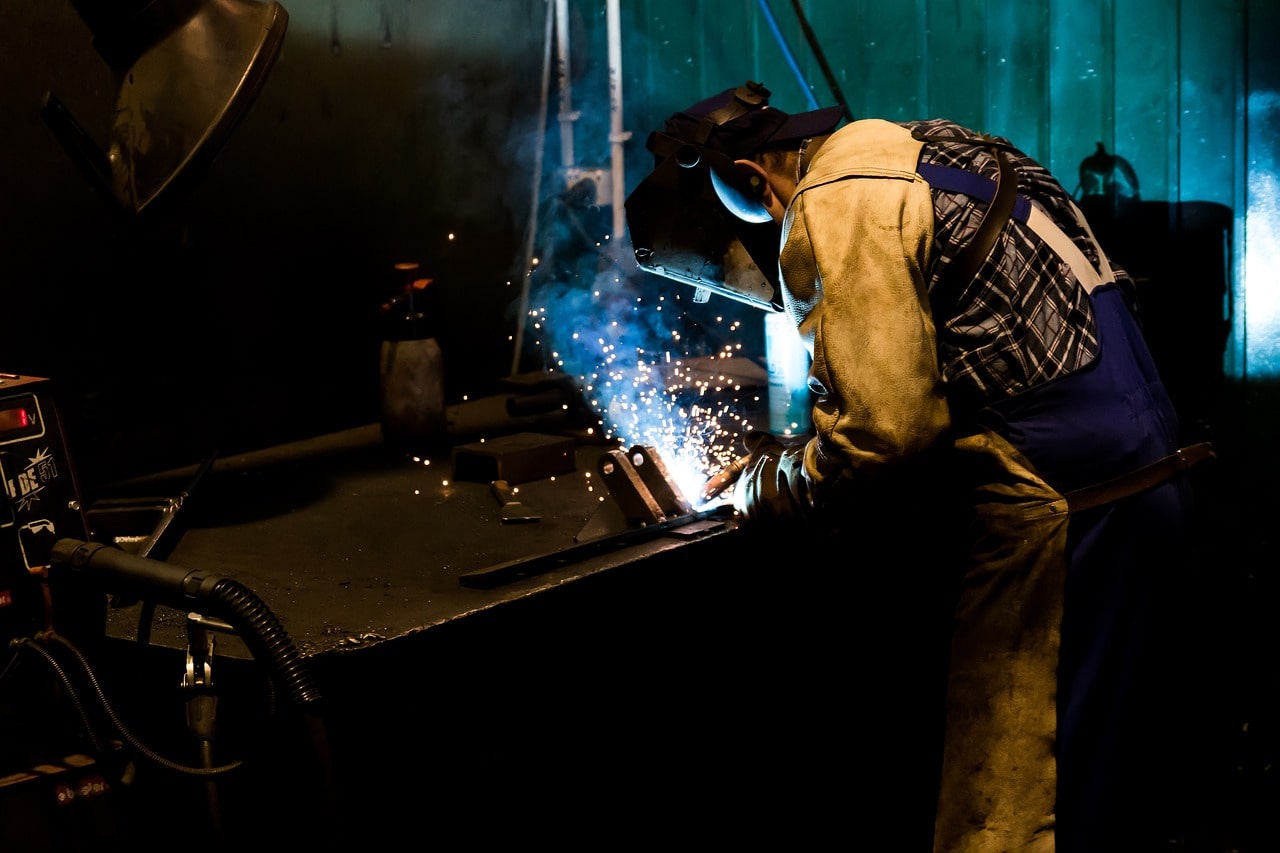



Welding Apron:
Leather aprons and bibs are available in various sizes and types: covering the chest down to the waist, waist to mid-thigh, or from the neck to below the knees.
These are made from flame-retardant cotton or cowhide with Kevlar stitching for strength.
Leather models have a high fire rating and are ideal for heavy-duty welding.
For cotton options, always check the specifications to establish its safe use.
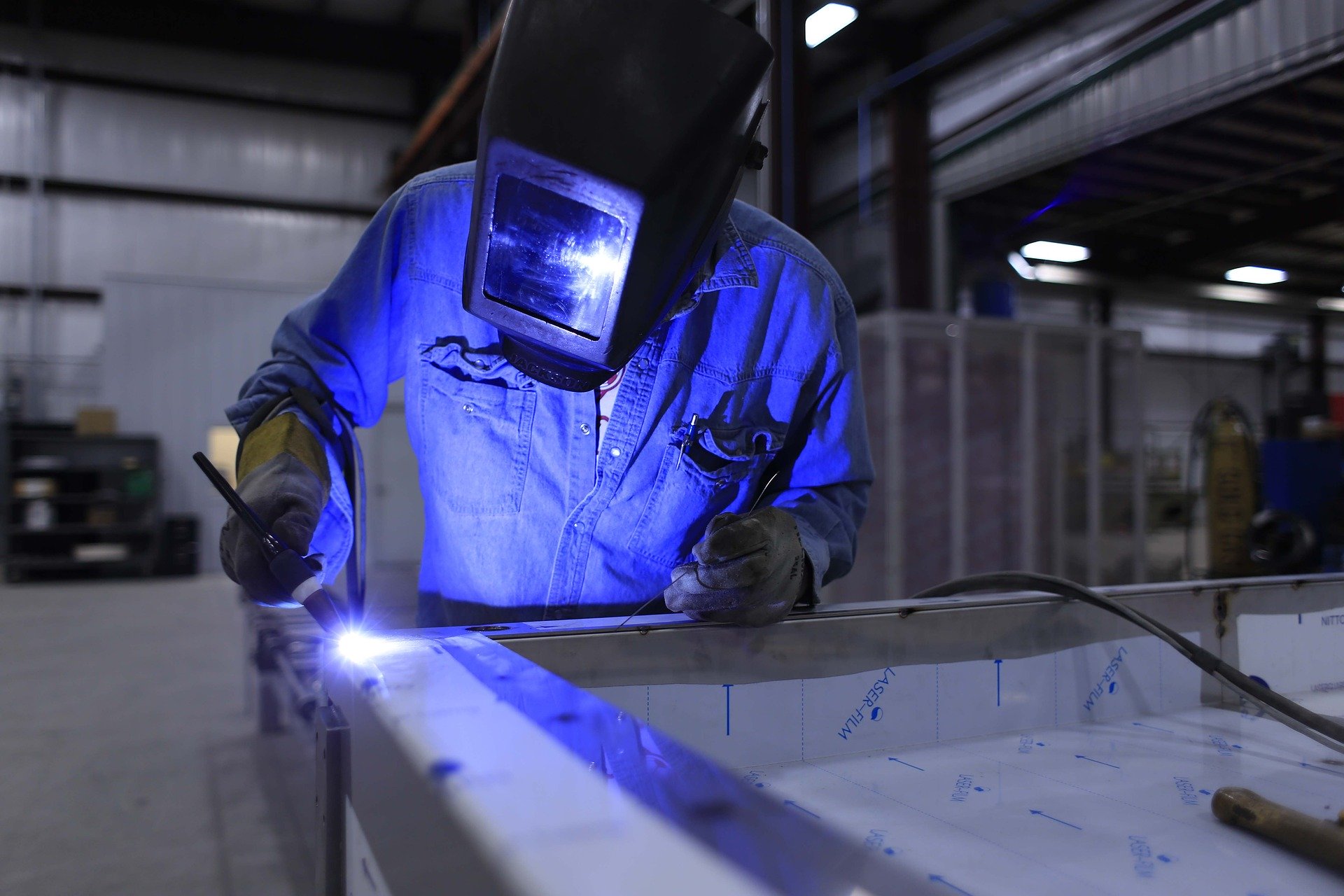



Welding Shirts:
Thicker shirt material will prevent burning items from reaching your skin and flame-resistant protection will self-extinguish sparks, leaving a small hole, but your skin will be protected.
It’s important to buy the best quality shirts you can afford, if you cut corners, you risk injury.
A comfortable fit is important as it will be worn for a full working day.
Never use regular clothing, it may look smart, but it will burn if a spark hits it.
The shirt must be made from suitable fire-resistant materials.
Many shirts have an anti-odor treatment which keeps them smelling fresh.
Some materials prevent the absorption of sweat and moisture, which will keep you comfortable when it’s hot.
Some shirt sleeves incorporate venting which improves airflow for improved comfort if it’s very hot.
Pockets are useful in a work shirt for items you may need quickly, and flaps are essential to prevent sparks from getting inside.
Your shirt should be machine washable for quick turnaround.
However, the issue is that some fire-retardant treatments are reduced by washing.
So you need to check the manufacturer’s instructions carefully.
Welding Pants:
The pants you wear at work could determine your safety in the event of a mishap.
It’s best to be prepared.
However, being comfortable is also important for productivity.
Buy a quality, hard-wearing brand with 100% cotton materials, which are fire-resistant to withstand long periods of welding activity.
Many pants have pockets at the knees for kneeling pads.
These can be slipped in place when needed, though it is much easier than securing pads with straps.
Materials for work pants should have some stretch to assist with the physical activity of the job requires.
Welding work pants should never have cuffs, these are perfect places for hot metal to lodge and burn.
Leave the leg straight and long enough to cover the front of your work boots.
Denim jeans are an ideal material for welding pants due to its strength.
It’s hard even for sharp pieces to penetrate the fiber.
Denim is hard-wearing, machine washable and has excellent fire resistance.
Hand Protection:
Welding Sleeves/Capes:
Welding sleeves are used when you need extra protection over a lower-rated shirt or jacket when there’s a high risk of spatter.
These cover each arm from your armpits to your wrists.
They are lightweight and flexible and won’t restrict your movements.
They are made from cowhide or flame-retardant cotton and some have Kevlar stitching for strength.
Other models include a cape with sleeves which protects the neck, shoulders, chest and arms down to the wrists.
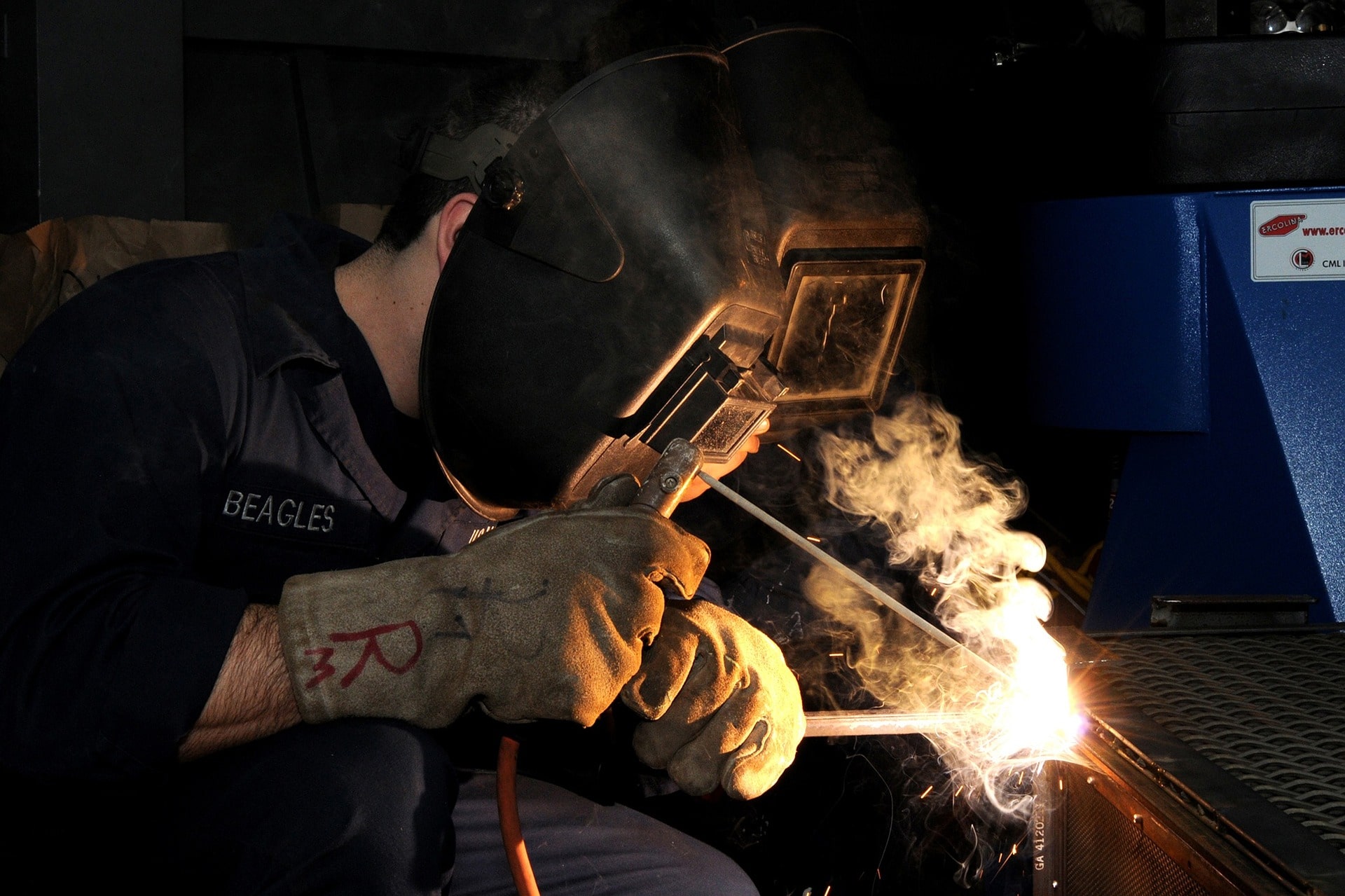



Welding Gloves:
Your hands are always vulnerable to high temperatures.
Choices include short gloves which cover to just above the wrist, through to gauntlet style gloves which cover the whole forearm.
The best gloves are manufactured from cowhide or deerskin and some have additional pig hide cuffs, wrists and palm patches for extra protection.
They should be lined with heat resistant cotton for comfort.
Softness and pliability are important too.
If they are too stiff, it makes them difficult to use.
Check the stitching, the gloves are used in tough environments, so the stitching must be up to scratch.
Kevlar is by far the best for this job.
Always check the top temperature touch rating for the glove.
While no glove will cope with the highest temperatures in welding, select the highest temperature rating you can afford.
Foot Protection:
Welding Boots:
Your work boots need to meet high standards for comfort and safety and address the following areas:
- 100% Leather upper for comfort and safety.
- Comfortable for all-day wear.
- Arch support with soft moldable interiors to fit your feet.
- Soft and comfortable lining for comfort.
- If they are too heavy, they will be tiring to wear.
- Waterproof.
- Electrically safe.
- Provide protection with steel toe caps.
- Oil and slip-resistant rubber soles with steel puncture protection.
- Kevlar stitching for strength.
- Boots should cover your ankles and lower legs.
- Resist heat, live power, chemical spills and other hazards.
- Slip-on style is easy and quick to pull on and off, but looser.
- Laced boots are tighter and offer more support, but laces are vulnerable.
- Ensure the boots meet the OSHA standards.
Bonuses:
Welding Chaps:
Welding chaps safely protect your legs and pants from spatter and debris.
These are full length and strap around your pants legs with an adjustable waistband.
The best chaps are made from leather for maximum fire protection.
They add some weight but the benefit of wearing them is you don’t get burned or ruin your pants.




Knee Pads:
Welders sometimes have to kneel on rough, hard floors while working.
Apart from cuts, kneeling puts pressure on the knee joints and can cause permanent damage.
Wearing knee pads will protect your knees as well as your pants.
There are a number of different types available, here are six examples:
Hard Shells: Hard-shell pads allow you to slip about easily while kneeling on a hard floor.
Shaped Pads: Shaped soft pads have a rubber face which grips the floor, but lets you move about easily.
Flat-Pads: Flat pads are ideal when you want to stay static. They incorporate a flat surface with padding.
Strapped Pads: Strapped pads are fixed around your legs using adjustable straps. These are often molded plastic shapes, like shells, with added padding.
In-Built: Certain styles of pants have pad pockets fitted around the knee area so you can fit pads inside whenever you need them.
Cushioned Mats: Small cushioned mats are easily portable. Place the mat on the floor where you are working. They are not strapped to your legs and give you instant comfort.
Conclusion:
“An ounce of prevention is better than a pound of cure.”
Benjamin Franklin, a Founding Father of the United States of America.
Any item of Personal Protective Equipment can seem to create an obstacle between you and your work.
You may feel hindered from doing your work or it’s uncomfortable. The temptation is to cut corners. Bear in mind the consequences of doing that.
Not using PPE puts you at high risk of injury, disability or even death.
Good design in PPE is critical, it will reduce dangers, be comfortable to use and help ensure healthy and safe working environments.
Controlling workplace hazards is essential in reducing threats to the safety of employees.
However, controls are often a low priority because workers have PPE as protection, so it’s regarded as less of a priority, which is totally wrong.
While PPE is a valuable asset it should never be the leading method of maintaining worker safety.
Safety is a culture, not a rule. Remember your life depends on it.
Check this link for more detailed information on PPE.
